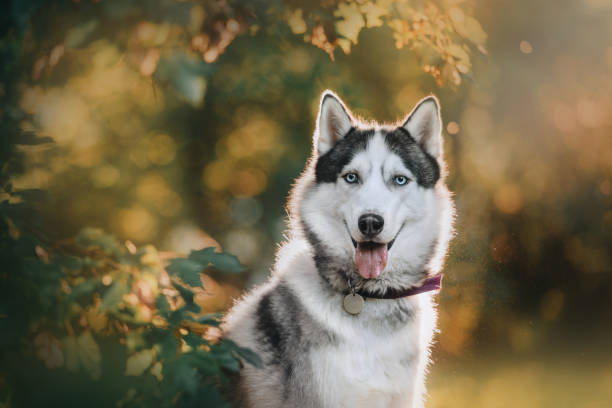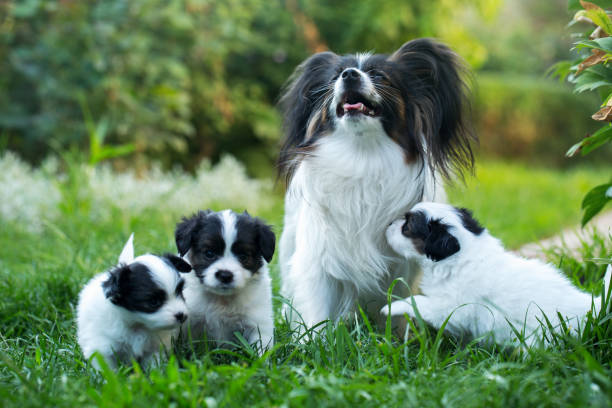The definition of “low maintenance” can differ based on personal interpretations; however, it’s generally accepted that these dogs require less of your time and energy compared to other breeds. Additionally, they have a greater tendency to tolerate kids and other pets in the household. Taking into account the lifestyle a dog will likely have is key when adopted a pet; some need significant attention, while others are content in solitude. This selection embraces both active dogs who require substantial physical activity and more laid-back canines who enjoy lounging around the home all day.
English Bulldog


The English Bulldog is one dog that needs minimal exercise; in fact, they’re known for being great napping buddies. They need less than an hour of daily exercise, and they can also be trained to walk on a leash without pulling against you. Bulldogs were bred down from active dogs like the extinct Bullenbeisser, but they’re better suited to life nowadays as house pets.
Newfoundland


The Newfoundland is famous for its friendliness and calm temperament; it’s known for being patient with kids playing around the house or tugging on their fur without getting annoyed. Despite their friendly demeanour, they make good guard dogs because they’re so big that it’s intimidating to look at them. If you have a large house or yard, then this is the perfect dog for you.
Basset Hound


The Basset Hound is another friendly breed that gets along well with children and other animals in the home, though they’re known for being stubborn. They need daily exercise and long walks to keep their energy level up. Otherwise, they’ll sit around all day. They’re better suited for people who live in warmer climates since they don’t handle the cold well; even indoors is too cool for them.
Chow Chow


The Chow Chow is another dog that makes a good watchdog but doesn’t need many exercises. They’re small and sturdy but very stubborn, which means they need to be trained from a young age. Low-energy dogs are often easier to train, so if you have the patience for this breed, Chow Chows might be a good choice.
Shiba Inu


The Japanese dog known as the Shiba Inu is sometimes called the smallest spitz dog due to its fox-like features. They’re not an aggressive breed, but they need the training to accept strangers. They don’t need many exercises, but they can be hard to catch when they get off their leash! If your dog is easy to train and doesn’t run away, this is a great breed to try.
Alaskan Malamute


The Alaskan Malamute was bred for being an active sled dog, so it can be challenging living with this breed indoors where they don’t get much exercise. They need long walks daily, but if you have the space and time, they make great pets. They need to be trained since they can be aggressive towards other dogs, but they’re friendly towards children and are known for being curious.
Pugs


Pugs are another breed that needs little exercise; their short legs make them unsuited to long hikes or runs even though they love playing outside with their owners. This is a great choice for people who live in an apartment or condo, but they do need to be taken on a daily walk. They can get overheated very easily and should not be left out in the sun for too long.
Bullmastiff


The Bullmastiff is bred from two breeds: bulldogs and mastiffs. They’re big dogs, so they need less daily exercise than smaller breeds. They’re not aggressive towards people, and although they might get snappy if they feel threatened, it’s hard to enrage this breed unless you do so on purpose. They make great guard dogs due to their protective instincts and loyalty to their family.
Bulldog


The Bulldog is a low energy breed that needs a lot less daily exercise than other dogs. They can get enough exercise from indoor play and short walks around the block, but this dog has been bred to have trouble breathing, so they’re better suited for people who don’t plan on taking them on long hikes or runs. Bulldogs are calm and friendly, and they adapt well to apartment living.
Great Dane


If you’re looking for a dog that’s as gentle as they are huge, then the Great Dane is perfect for you. They don’t need daily walks or runs unless this is part of their exercise routine; most days, they’ll be happy playing inside with something like a ball or a frisbee. Some of the best low-maintenance dogs are gentle giants, and this breed can grow up to 7 feet tall!
Dogue de Bordeaux


The Dogue de Bordeaux is another giant dog that doesn’t need many exercises unless part of its routine. This breed needs less exercise than other dogs but thrives on interaction with people. They can be stubborn, so they need to learn basic commands from an early age, and they don’t do well with small children since they’re big dogs that are used to being around adults.
Bloodhound


Bloodhounds were bred as hunting dogs, but they’ve become popular as pets since they’re banned in most countries. They need little exercise and are calm around people; although they can get along with other dogs, this breed is known for being territorial, so it’s best to socialize them from a young age. If your dog is easy to train and gets along with children, this might be a low-maintenance dog for you.
Beagle


Beagles are another breed known for being great with children, and they’re also judged to be easy to train since they respond well to treats. They need activity in their lives so they can’t be confined too often; it’s best to take them on a daily walk or run to release energy. They thrive with daily interaction, so if your dog is left alone for long periods of time, then this breed might not be the best choice.
Greyhound


Greyhounds are gentle breeds that need less exercise but thrive on interaction with people. This is a good breed for people who live in small homes or apartments since they don’t need much space to run around. This breed isn’t aggressive and doesn’t bark, so it’s a good choice for people who live in close quarters with neighbours.
The Great Pyrenees


The Great Pyrenees is a large breed that likes to be active and enjoys spending time outside; this is good for people who need their dog to release energy. Some of the best low maintenance dogs are the working breeds, and this breed is known for being active when they’re not sleeping, so it’s best if you can give them plenty of time outside playing with you.
Basenji


Basenjis are one of the best breeds for living in apartments since they don’t need much space to run around. They’re very active indoors and aren’t known for barking or territorial, making them great with neighbours. This is a good breed for people who have busy schedules since they only need daily exercise and minimal grooming.
Keeshond


The Keeshond is affectionate with their owners and is gentle around children. This breed needs daily exercise to stay active but doesn’t need much space to run around in. If your dog is a high energy, this might be the low maintenance breed for you since they only need small amounts of activity during the day, but they need to be active every day.
What Makes a Dog Low Maintenance
Having a low-maintenance breed means that they don’t need excessively long walks every day. Some breeds are less hardy than others, so it would be impossible for them to thrive in an environment with lots of obstacles or extreme temperatures.
If you’re looking for the most dog-friendly type of home (along with pup), consider moving to an area where you can walk your pet regularly on the pavement rather than fields or mountains, and whether they enjoy cooler climates better than hot ones. It would help if you also looked into their grooming needs; different breeds require more elaborate bathing routines.
Are there any Breeds that aren’t Low Maintenance
Yes, breeds like Airedale Terriers and Bull terriers, for example. They are high-energy dogs that need hours of exercise every day.
How much Exercise do I Need to Give My Dog Every Day if it’s Considered “Low Maintenance?”
It’s different for every breed, so you’ll have to do some research. All dogs need to have some level of exercise, but many breeds live busy lives without too much running around needed since they use their energy up at work or school instead.
And naturally, the more active your life is – with lots of work or kids or other pets – then the more exercise your dog needs. The best place to start is just knowing what kind of pump you’re choosing before setting up a routine because not all low maintenance breeds are created equal! These are just a few things to keep in mind when narrowing down the perfect pup for your lifestyle.
How much Space does My Dog Need?
This isn’t always an easy question to answer, but you can give a generalized idea based on the breed – and if they’re a smaller breed or a larger one. They don’t need a lot of space, but some high-energy breeds might do better in homes with large yards that they can play in every day.
What Kind of Grooming does My Dog Require?
Again, this is different for every breed. Some dogs need more extensive grooming than others. But all dogs require some regular maintenance to keep their appearance tidy and their skin healthy. This includes brushing multiple times a week, nail clipping occasionally, and ear cleaning when needed.
Conclusion
Choosing a low-maintenance dog is an important decision if you’re looking for the perfect pup that will suit your lifestyle. In this article, we’ve provided some tips to help you find the right breed, including considering their size and energy level, how much space they need to thrive, what kind of grooming they require, and how much exercise is necessary every day.


